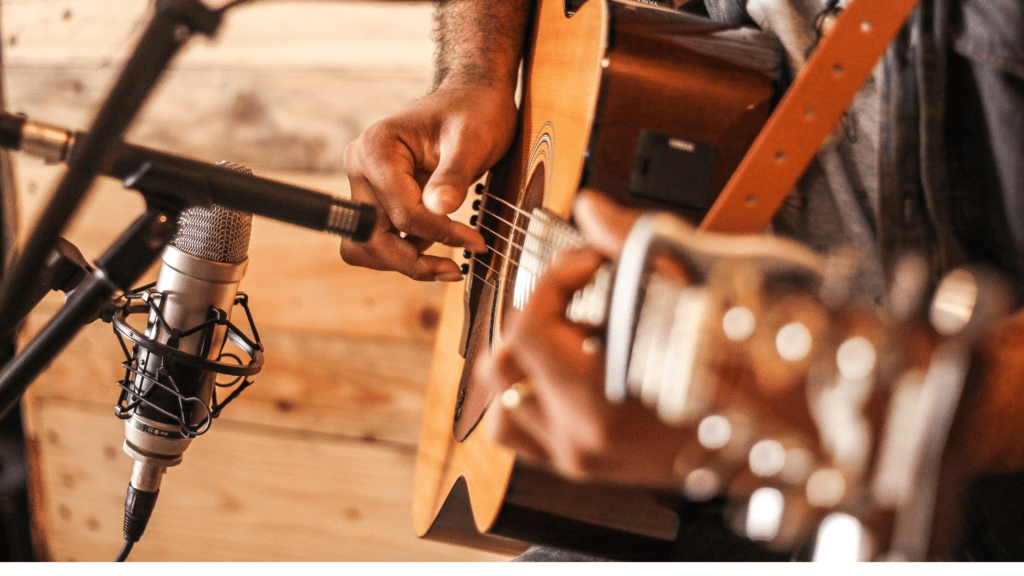Acoustic guitar recording can be a challenging task, but with the right microphone placement, you can capture the true essence of the instrument. Proper microphone placement is essential for achieving a clear and balanced recording that accurately represents the sound of the guitar.
The distance between the microphone and the guitar is critical to the sound quality of the recording. Generally, a distance of 30 to 50 centimeters is a good starting point. However, the exact distance will depend on the sound of the guitar and the desired tone. If you want a more intimate sound, place the microphone closer to the guitar. If you want a more natural sound, place the microphone farther away.
The angle of the microphone is also important. If the microphone is angled directly at the sound hole, it will pick up a lot of bass and low-end frequencies, which can cause the recording to sound boomy. To avoid this, angle the microphone slightly off-axis from the sound hole. This will help balance the recording and reduce the low-end frequencies.
When recording an acoustic guitar, you have the option of recording in stereo or mono. Stereo recording uses two microphones to capture the sound of the guitar from different perspectives. This creates a more immersive and natural sound. Mono recording uses a single microphone, which is typically placed directly in front of the guitar.

The sound of the room you’re recording in can have a significant impact on the final recording. If you’re recording in a room with a lot of natural reverb or echo, you may want to use a microphone with a cardioid pickup pattern, which is directional and will help reject sound from the sides and rear. If you’re recording in a room with minimal reverb or echo, you may want to use a microphone with an omnidirectional pickup pattern, which will capture sound from all directions.
In conclusion, microphone placement is crucial for capturing the true essence of an acoustic guitar recording. Experiment with different distances, angles, and recording techniques to find the best setup for your recording. Remember, the right microphone placement will ensure a clear and balanced recording that accurately represents the sound of the guitar.